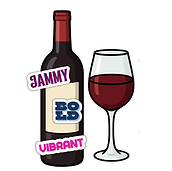Uncovering America's best kept wine secrets
Michigan
Michigan might not be the first state that comes to mind when you think of wine, but maybe it should be. Thanks to its Great Lakes influence, high latitude, and cold-hardy grape game, Michigan is quietly producing some of the best cool-climate wines in the country, especially Riesling, Pinot Noir, and sparkling wine.
By the Numbers
2 Million
Over 2 million people visit Michigan wineries each year, especially along the scenic wine trails of the Leelanau and Old Mission Peninsulas.
3,375
Michigan has more than 3,375 acres of wine grapes, with Riesling as the most planted vinifera grape (traditional European grapes), followed by Pinot Gris, Chardonnay, and Pinot Noir.
175+
Michigan is home to more than 175 wineries, spread across both peninsulas.
If These Vines Could Talk
The Grapes

Riesling
Crisp, high-acid, and often off-dry, Michigan Riesling thrives in the state's cool lakeside vineyards. Old Mission Peninsula and Leelanau Peninsula are the top regions.
Pinot Noir
Michigan Pinot Noir is light-bodied and tart, with cranberry, cherry, and earthy notes. It benefits from the moderating effect of Lake Michigan and cooler growing seasons.


Chardonnay
Michigan Chardonnay is lean, citrusy, and fresh: closer to Chablis than California in style. The state’s cooler sites help preserve acidity and minerality.
Cabernet Franc
Cab Franc is one of the most reliable red grapes in Michigan, offering bright red fruit, green pepper, and spice. It ripens early and handles the cooler climate well.


La Crescent
A cold-hardy hybrid, La Crescent produces highly aromatic, tropical whites. It’s a rising star for wineries in the colder northern AVAs.
Marquette
A cold-hardy red hybrid, Marquette produces bright, spicy reds with cherry and blackcurrant notes. It ripens early and grows well in Michigan’s northern vineyards.


Frontenac
Frontenac is a cold-hardy red hybrid with bold acidity and flavors of cherry, blackberry, and spice. It’s popular in northern Michigan and often used in both still and sparkling wines.
History
1780s–1800s
Missionaries & Native Grapes
Early French missionaries and settlers make wine from wild Vitis riparia and Muscadine species.
.png)

1860s
First Cultivated Vines
Commercial grape growing begins in southwest Michigan, particularly around St. Joseph and Benton Harbor.
.png)

1919–1933
Prohibition Pauses Progress
Like the rest of the U.S., Prohibition halts Michigan’s growing wine scene.
.png)

1930s–1950s
Juice Over Wine
Grape production shifts toward juice grapes like Concord and Niagara, supplying Welch’s and others.
.png)

1974
Tabor Hill Starts a Movement
Tabor Hill Winery becomes the first Michigan winery to produce vinifera-based wines (like Riesling) post-Prohibition.
.png)

1980s
AVAs & Quality Boost
Fennville AVA (1981) becomes Michigan’s first. Soon after, Lake Michigan Shore and Leelanau Peninsula are recognized.
.png)

1990s–2000s
Vinifera Expansion
Wineries increase plantings of Riesling, Pinot Gris, Chardonnay, and even Pinot Noir, especially in the northwest.
.png)

2010s
Hybrids Thrive & Sparkling Grows
Cold-hardy grapes like Marquette and Frontenac gain traction; sparkling wine sees major growth.
.png)

2020s
National Attention Builds
Michigan earns recognition for world-class Riesling, sparkling wine, and a new generation of small, quality-focused producers.
.png)
